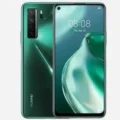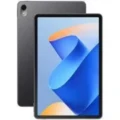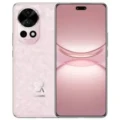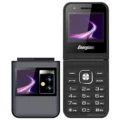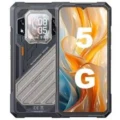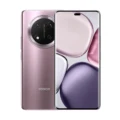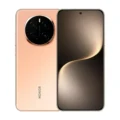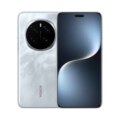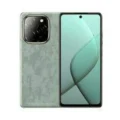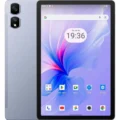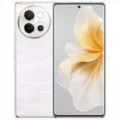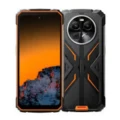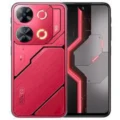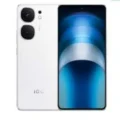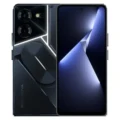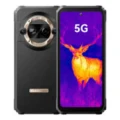Huawei P40 Pro
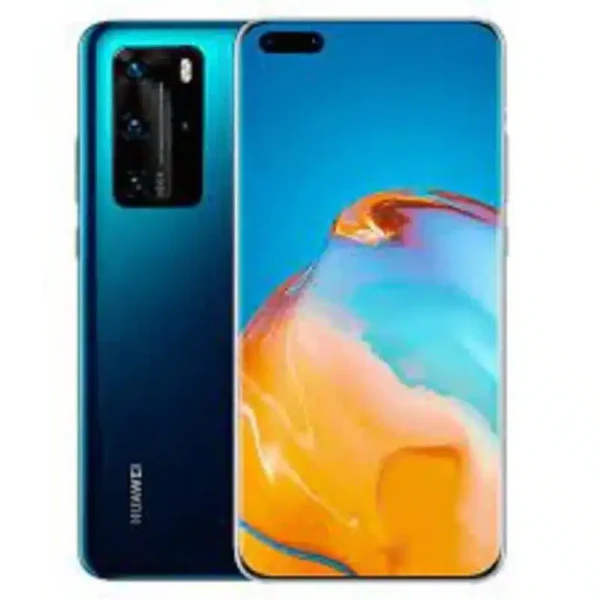

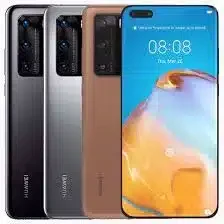

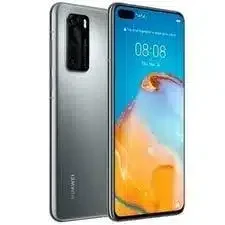
- : 8GB RAM Kirin 990 5G
- : 6.58" 1200x2640 pixels
- : 4200mAh Li-Po
- : 50MP 2160p
Huawei P40 Pro: Your Picture-Perfect Powerhouse (under 300 words)
Take Amazing Photos: Capture stunning moments with the P40 Pro’s super camera. With a powerful sensor and incredible zoom, it’s like having a pro camera in your pocket!
Zoom in Super Close: See things far away like never before! The P40 Pro’s zoom lets you get close to wildlife, capture distant details, or take amazing wide pictures – all with crystal-clear quality.
Beautiful & Smooth Screen: Enjoy movies, games, and photos on the big, smooth screen. Colors look bright and everything appears sharp, making it a joy to use.
Powerful & Fast: Do lots of things at once and run demanding apps easily with the P40 Pro’s powerful processor. It’s like having a mini computer in your hand!
Long Battery Life: Don’t worry about running out of battery! The P40 Pro lasts all day, and charges quickly when you need a boost.
Stylish Design: Look good while you have fun! The P40 Pro comes in sleek, modern designs that turn heads wherever you go.
Things to Remember: You might need to use different apps than usual with this phone. Also, check with your phone company to make sure it works with their network.
Perfect for:
- People who love taking pictures: This camera is amazing!
- People who do lots on their phone: It’s fast and powerful!
- People who want a cool-looking phone: It’s stylish and modern!
If you want a phone that takes great pictures, is fast and powerful, and looks good, the Huawei P40 Pro is a great choice!
Want to Learn More?
Visit the official website of Huawei for detailed information about the Huawei P40 Pro : Huawei Official Website
Still Unsure?
If you’re still unsure about your choice, explore other options from Huawei at your nearest store: Huawei Store
Specs
Network
| 2G Network GSM 850 / 900 / 1800 / 1900 - SIM 1 & SIM 2 (dual-SIM) CDMA 800 / 1900 |
GSM 850 / 900 / 1800 / 1900 - SIM 1 & SIM 2 |
| 3G Network | HSDPA 800 / 850 / 900 / 1700(AWS) / 1900 / 2100 |
| 4G Network |
1, 2, 3, 4, 5, 6, 7, 8, 9, 12, 17, 18, 19, 20, 26, 28, 32, 34, 38, 39, 40, 41 - ELS-NX9 1, 2, 3, 4, 5, 6, 7, 8, 9, 12, 17, 18, 19, 20, 26, 28, 34, 38, 39, 40, 41, 66 - ELS-N04 |
| 5G Network |
1, 3, 28, 38, 41, 77, 78, 79 SA/NSA - ELS-NX9 1, 3, 5, 28, 38, 41, 66, 77, 78, 79 SA/NSA - ELS-N04 |
| Speed | HSPA, LTE-A, 5G |
LAUNCH
| Announced | March, 2025 |
| Status | Available. Released 2020, April 07 |
BODY
| Dimensions | 158.2 x 72.6 x 9 mm (6.23 x 2.86 x 0.35 in) |
| Weight | 209 g (7.37 oz) |
| Build | Glass front, glass back, aluminum frame |
| SIMs SIM (Subscriber Identity Module) is a small card that contains mobile network subscriber's account information. This allows the phone using the card to attach to a mobile network. The SIM card is most commonly associated with GSM and UMTS mobile networks. Moving a SIM card from one phone to another allows a subscriber to switch mobile phones without having to contact their mobile network carrier. SIM cards can also be used by a phone to store limited amounts of data, such as phone numbers and text messages. |
Nano-SIM and eSIM or Hybrid Dual SIM (Nano-SIM, dual stand-by) IP68 dust/water resistant (up to 1.5m for 30 min) |
Display
| Display Type Display Technology => A number of display technologies and types used in mobile phones => TFT (Thin Film Transistor), IPS (In-Place Switching), OLED (Organic Light Emitting Diode), AMOLED (Active-Matrix Organic Light-Emitting Diode), Super AMOLED (an even advanced version of AMOLED), Resistive Touchscreen (Resistive touchscreens contain two layer of conductive material with a very small gap between them which acts as a resistance), Capacitive Touchsceen (Capacitive touchscreen technology consists of a layer of glass coated with a transparent conductor) | OLED, 90Hz, HDR10 |
| Size | 6.58 inches, 105.2 cm2 (~91.6% screen-to-body ratio) |
| Resolution | 1200 x 2640 pixels (~441 ppi density) |
PLATFORM
| Operating System OS => Every computer system run on a base software called Operating System (OS). Operating System controls all basic operations of the computer (such as smartphone, PDAs, tablet computers and other handheld devices). The Operating System allows the user to install and run third party applications (apps), apps are used to add new functionality to the device. | Android 10, EMUI 10.1, no Google Play Services |
| Chipset Chipset is a group of integrated circuits designed to perform one or a more dedicated functions, often with real time computing constraints, Popular smartphones are equipped with more advanced embedded chipsets that can do many different tasks depending on their programming. | Kirin 990 5G (7 nm+) |
| CPU CPU (Central Processing Unit) mostly known as processors, CPU processes instructions in order to carry out certain functions that make your device operate properly. Processors are often described as the brain of computers, smartphones and tablets, Smartphones and tablets rely on processors to carry out their every task, Processors are an incredibly important factor in selecting any type of computing device, including your smartphone. | Octa-core (2x2.86 GHz Cortex-A76 & 2x2.36 GHz Cortex-A76 & 4x1.95 GHz Cortex-A55) |
| GPU GPU (Graphics Processing Unit) is a single-chip processor designed to rapidly manipulate and alter memory to accelerate the creation of images in a frame buffer intended for output to a display, This includes things such as lighting effects, object transformations, and 3D motion. | Mali-G76 MP16 |
MEMORY
| Card Slot Memory Card Slot is a special slot for inserting a memory card. Memory cards allow you to expand the phone's built-in memory, A memory card (sometimes called a flash memory card or a storage card) is a small storage medium used to store data such as text, pictures, audio, and video, for use on small, portable or remote computing devices such as mobile phones, mp3 players, digital cameras. | NM (Nano Memory), up to 256GB (uses shared SIM slot) |
| Internal | 128GB 8GB RAM, 256GB 8GB RAM, 512GB 8GB RAM UFS 3.0 |
MAIN CAMERA
| Cameras Specs Today’s smartphones come equipped with a very comprehensive set of camera related specifications. Our smartphone, for many of us, has become our primary camera due to it being the one we always have with us. |
50 MP, f/1.9, 23mm (wide), 1/1.28", 1.22µm, dual pixel PDAF, OIS 12 MP, f/3.4, 125mm (periscope telephoto), PDAF, OIS, 5x optical zoom 40 MP, f/1.8, 18mm (ultrawide), 1/1.54", PDAF TOF 3D, (depth) |
| Video | 4K@30/60fps, 1080p@30/60fps, 720@7680fps, 1080p@960fps, HDR; gyro-EIS |
| Camera Features | Leica optics, LED flash, panorama, HDR |
SELFIE CAMERA
| Cameras Specs Today’s smartphones come equipped with a very comprehensive set of camera related specifications. Our smartphone, for many of us, has become our primary camera due to it being the one we always have with us. |
32 MP, f/2.2, 26mm (wide), 1/2.8", 0.8µm, AF IR TOF 3D, (depth/biometrics sensor) |
| Features | HDR |
| Video | 4K@30/60fps, 1080p@30/60fps |
SOUND
| Loudspeaker | Yes |
| 3.5mm jack |
No 32-bit/384kHz audio |
COMMS
| WLAN |
Wi-Fi 802.11 a/b/g/n/ac/6, dual-band, Wi-Fi Direct |
| Positioning |
GPS (L1+L5), GLONASS (L1), BDS (B1I+B1c+B2a), GALILEO (E1+E5a), QZSS (L1+L5), NavIC |
| Bluetooth Bluetooth is a wireless communications technology for exchanging data between mobile phones, headsets, computers and other network devices over short distances without wires, Bluetooth technology was primarily designed to support simple wireless networking of personal consumer devices. | 5.1, A2DP, LE |
| Infrared Infrared connectivity is an old wireless technology used to connect two electronic devices. It uses a beam of infrared light to transmit information and so requires direct line of sight and operates only at close range. | |
| USB | USB Type-C 3.1, OTG |
| NFC NFC (Near field communication) is a set of standards for smartphones and similar devices to establish peer-to-peer radio communications with each other by touching them together or bringing them into proximity, usually no more than a few inches. | |
| Radio |
Features
| Sensors Sensors are electronic components that detects and responds to some type of input from the physical environment. The specific input could be light, heat, motion, moisture, pressure and location, The output is generally a signal that is converted to use in computing systems, a location sensor, such as a GPS receiver is able to detect current location of your electronic device. | Infrared Face ID, fingerprint (under display, optical), accelerometer, gyro, proximity, compass, color spectrum |
BATTERY
| Battery Type Battery Type => Cell phones run on various kinds of batteries depending on the manufacturer, phone size or shape and features. There are basically four types of cell phone batteries => Lithium Polymer, Lithium Ion, Nickel Metal Hydride and Nickel Cadmium. | Li-Ion (Lithium Ion) |
| Charging The functionality responsible for recharging batteries in portable devices, such as mobile phones, significantly influences both battery lifespan and the practicality of daily product usage.The charging process, encompassing factors like voltage, current, and completion actions, is contingent upon the battery's size and type.Contemporary battery chargers dynamically adjust charging parameters based on the battery's current charging state. Charging an empty battery poses no safety risk, allowing for a quicker charging process. Consequently, many charging speed benchmarks, including ours, specify the battery level achieved after a 30-minute session on an empty battery.Standard chargers with a power output of 5V/1A, equivalent to 5W, serve as a baseline, with anything surpassing this speed classified as quick or fast charging. | 40W wired 27W wireless 27W reverse wireless |
MISC
| Colors |
Silver Frost, Blush Gold, Deep Sea Blue, Ice White, Black |
| Model | ELS-NX9, ELS-N04, ELS-AN00, ELS-TN00 |
| Price | $ 565.00 / € 391.14 / £ 468.00 |
TESTS
| Performance |
AnTuTu: 496356 (v8) GeekBench: 12848 (v4.4), 3197 (v5.1) GFXBench: 31fps (ES 3.1 onscreen) |
| Display | Contrast ratio: Infinite (nominal) |
| Loudspeaker | -27.5 LUFS (Good) |
| Battery (old) | Endurance rating 94h |
Reviews
Disclaimer Note
We strive to maintain accurate and up-to-date content on our website for general information purposes only. Please refrain from using the material for business, legal, or any other decisions.


